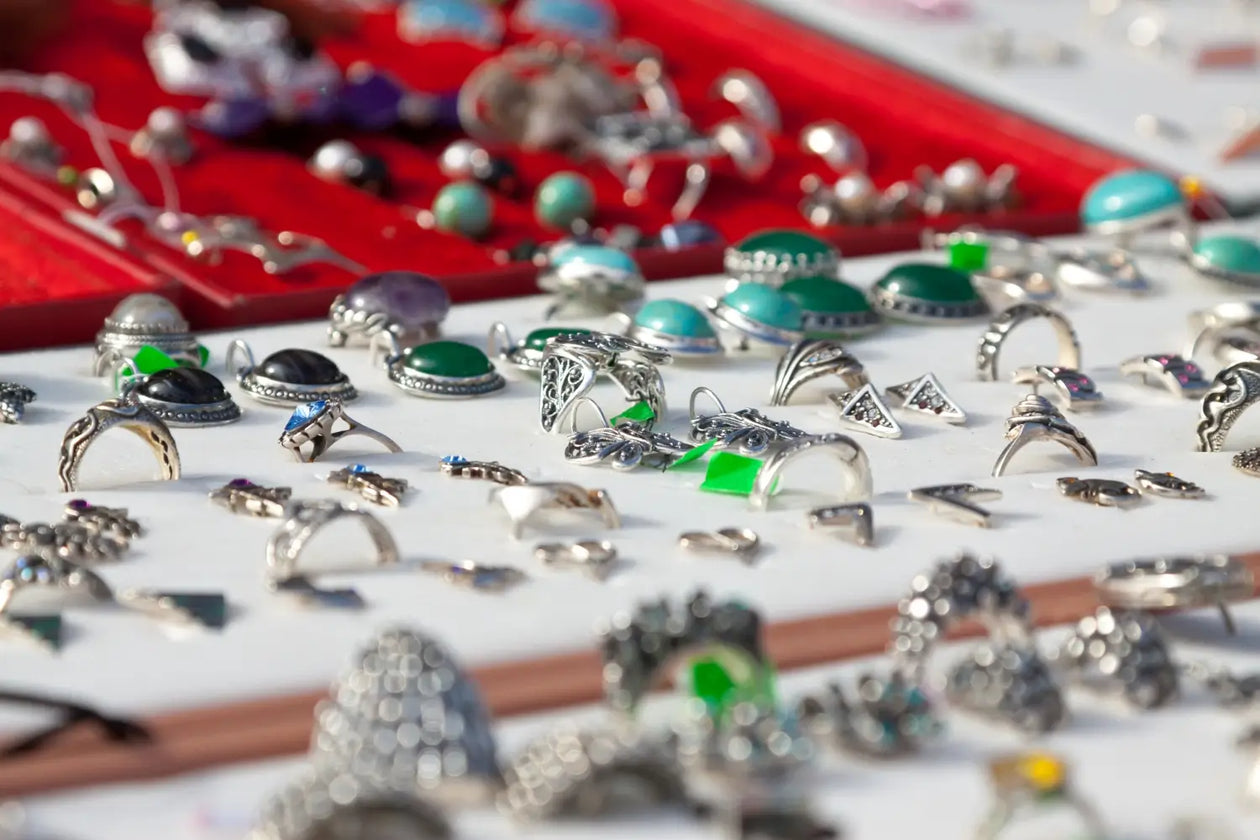Berber Jewelry Legacy

Berber Jewelry Legacy: A Moroccan Tradition
Dive into the world of Berber jewelry! This blog uncovers its ancient history, deep symbolism, and modern revival, celebrating the artisans who keep this Moroccan tradition alive.
Journey into the timeless world of Berber jewelry, a cornerstone of Moroccan culture that tells stories of heritage and identity! Crafted by skilled Berber artisans, these intricate pieces are more than adornments—they’re symbols of history, protection, and beauty. At Swiqat Crafts, we’re honored to share the legacy of Berber jewelry, exploring its origins, meanings, and revival in today’s world. Let’s celebrate this vibrant Moroccan tradition together!
The Ancient Roots of Berber Jewelry
Berber jewelry dates back thousands of years, originating with the Amazigh (Berber) people of North Africa, long before Arab influences arrived. These indigenous tribes crafted jewelry from silver, amber, and coral, using techniques like engraving and filigree. Worn by both men and women, jewelry signified social status, tribal affiliation, and wealth. For example, a bride’s dowry often included heavy silver necklaces, showcasing her family’s prosperity. This deep-rooted tradition reflects the resilience of Berber culture, a legacy Swiqat Crafts cherishes in our mission to honor Moroccan craftsmanship.
Symbolism in Berber Designs
Every piece of Berber jewelry carries meaning, often rooted in protection and spirituality. Common symbols include the hand of Fatima (khamsa), believed to ward off the evil eye, and geometric shapes like triangles and diamonds, representing fertility and strength. Amber beads are thought to bring good luck, while coral symbolizes vitality. Large, ornate headdresses and fibulae (brooch-like pins) connect women to their tribal heritage, often passed down through generations. These symbols weave a story of Berber identity, making each piece a cherished artifact of Moroccan culture.
The Craftsmanship of Berber Artisans
Berber jewelry is crafted by artisans in Morocco’s Atlas Mountains and Sahara regions, where traditional techniques endure. Silversmiths melt and hammer silver into intricate shapes, setting stones like turquoise or onyx by hand. The process is meticulous—some pieces take days to complete, with designs etched using ancient tools. This traditional Moroccan craftsmanship ensures that every necklace, bracelet, or earring is unique, reflecting the artisan’s skill and heritage. Swiqat Crafts draws inspiration from these artisans, bringing their stories to a global audience through our curated collections.
The Modern Revival of Berber Jewelry
Today, Berber jewelry is experiencing a revival, blending tradition with contemporary style. Modern designers incorporate Berber elements into minimalist pieces, like delicate silver rings or pendants, making them accessible for everyday wear. In Morocco, artisans continue to create traditional pieces for cultural events, such as weddings, preserving their heritage. This revival bridges the past and present, ensuring Berber jewelry remains a vibrant part of Moroccan culture. Want to explore more Moroccan traditions? Check out our blog on Moroccan tagine pots to dive into another iconic craft.
Embrace the Berber Legacy with Swiqat Crafts
The legacy of Berber jewelry is a testament to Morocco’s rich cultural tapestry, where history and artistry intertwine. While Swiqat Crafts doesn’t sell Berber jewelry, we celebrate its influence through our authentic Moroccan crafts. From rugs to ceramics, our collections reflect the same spirit of craftsmanship and tradition. Explore our collections today and bring a piece of Morocco’s heritage into your life!
Leave A Reply
Your email address will not be published. Required fields are marked *


